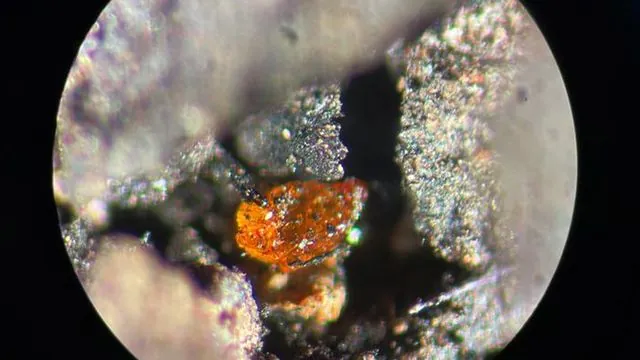
Groundbreaking Discovery: Antarctic Amber Unveiled for the First Time!
2024-11-13
Author: Yu
Groundbreaking Discovery: Antarctic Amber Unveiled for the First Time!
In a stunning revelation that connects the distant past to our present, researchers have discovered amber in Antarctica for the very first time, dating back approximately 90 million years. This pivotal find closes a significant gap on the global map of amber locations and sheds light on the ancient ecological conditions of the region, which were once home to resin-producing trees.
The Discovery Team
A distinguished team led by Dr. Johann P. Klages from the Alfred Wegener Institute, alongside Dr. Henny Gerschel of the TU Bergakademie Freiberg, unveiled this remarkable discovery in a paper published in the journal Antarctic Science. The amber, aptly named "Pine Island amber" after its location in Pine Island Bay of the Amundsen Sea Embayment (73.57° South, 107.09° West), was discovered in a sediment core they collected during an expedition aboard the research icebreaker Polarstern in 2017, at a depth of 946 meters.
Significance of the Discovery
Dr. Klages emphasized the significance of this discovery, stating, “The analyzed amber fragments provide a direct glimpse into the environmental conditions of West Antarctica during the mid-Cretaceous period.” He highlighted that this find enhances our understanding of ancient forests, which had the ability to support resin-producing trees across all seven continents at some point in geological history. “Our next goal is to further explore the remnants of this forest ecosystem—whether it faced destruction and to investigate for any traces of life preserved within the amber itself,” he added.
Amber Characteristics
While the amber fragments are not large, the meticulous analysis performed using advanced microscopy techniques revealed fascinating structural details. The amber showcases micro-inclusions of original tree bark, hinting at a complex prehistoric ecosystem. Furthermore, the high quality of the amber suggests it was buried just below the surface, meaning it has preserved well despite the challenges posed by thermal stress over millions of years.
Pathological Resin Flow
The researchers also uncovered evidence of pathological resin flow, a protective mechanism seen in modern trees that helps seal off damage caused by pests and wildfires. Dr. Gerschel explained, "This discovery is crucial as it provides new insights into the conifer-rich, temperate rainforest environment that thrived near the South Pole during the mid-Cretaceous, painting a vivid picture of a lush, prehistoric Antarctica."
Implications for Climate Research
This revelation not only fascinates paleobotanists and geologists, but it also invites the scientific community to ponder deeper questions about climate change and ancient ecosystems. As the climate crisis looms, understanding how ecosystems responded in the past could provide invaluable lessons for the future. Stay tuned for more updates on this groundbreaking research that keeps peeling back the layers of our planet’s history!



 Brasil (PT)
Brasil (PT)
 Canada (EN)
Canada (EN)
 Chile (ES)
Chile (ES)
 España (ES)
España (ES)
 France (FR)
France (FR)
 Hong Kong (EN)
Hong Kong (EN)
 Italia (IT)
Italia (IT)
 日本 (JA)
日本 (JA)
 Magyarország (HU)
Magyarország (HU)
 Norge (NO)
Norge (NO)
 Polska (PL)
Polska (PL)
 Schweiz (DE)
Schweiz (DE)
 Singapore (EN)
Singapore (EN)
 Sverige (SV)
Sverige (SV)
 Suomi (FI)
Suomi (FI)
 Türkiye (TR)
Türkiye (TR)